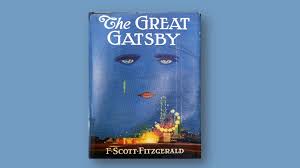Published in 1925, "The Great Gatsby" by F. Scott Fitzgerald is a timeless American classic that continues to captivate readers with its vivid portrayal of the Jazz Age and exploration of the American Dream. Set in the summer of 1922 on Long Island, New York, the novel follows the enigmatic Jay Gatsby and his pursuit of wealth, love, and the elusive promise of a better life. Through the lens of its complex characters and themes, "The Great Gatsby" offers a poignant commentary on the excesses and disillusionments of the Roaring Twenties. At the heart of the novel is the enigmatic figure of Jay Gatsby, a self-made millionaire who throws lavish parties at his opulent mansion in West Egg. Gatsby is driven by an all-consuming desire to win back his lost love, Daisy Buchanan, a wealthy socialite married to the old-money Tom Buchanan. Gatsby's relentless pursuit of the American Dream, embodied by his belief in the power of wealth and status to transcend social barriers, serves as a central theme in the novel. Through the character of Gatsby, Fitzgerald explores the themes of ambition, identity, and the corrupting influence of materialism in 1920s America. Gatsby's rise from humble origins to the heights of wealth and success symbolizes the allure and pitfalls of the American Dream, as he seeks to reinvent himself and overcome the constraints of his past. However, Gatsby's obsession with Daisy and his single-minded pursuit of wealth ultimately lead to his downfall, highlighting the emptiness and fragility of his grand illusions. "The Great Gatsby" also delves into the social and cultural dynamics of the Jazz Age, depicting the excesses, hedonism, and moral decay of the era. The novel vividly portrays the glittering world of the wealthy elite, with its extravagant parties, luxurious lifestyles, and superficial values. Through the contrasting settings of East Egg and West Egg, representing old money and new money, respectively, Fitzgerald critiques the social stratification and moral bankruptcy of 1920s society. Central to the narrative is the character of Nick Carraway, the novel's narrator and a distant cousin of Daisy Buchanan. Through Nick's perspective, readers are given insight into the lives of the characters surrounding Gatsby and their interconnected relationships. Nick's moral ambiguity and role as an observer and participant in the events of the story add depth and complexity to the novel, as he navigates the seductive allure and moral decay of the world he inhabits. "The Great Gatsby" is also renowned for its lyrical prose, evocative imagery, and rich symbolism that capture the essence of the Jazz Age. Fitzgerald's masterful use of language and imagery brings to life the sights, sounds, and emotions of 1920s America, from the glitz and glamour of Gatsby's parties to the melancholy beauty of the Long Island landscape. The novel's iconic symbols, such as the green light at the end of Daisy's dock and the eyes of Dr. T.J. Eckleburg, serve as powerful metaphors for the characters' desires, aspirations, and moral decay.
10 april 1925 U.S.A. The Great Gatsby
